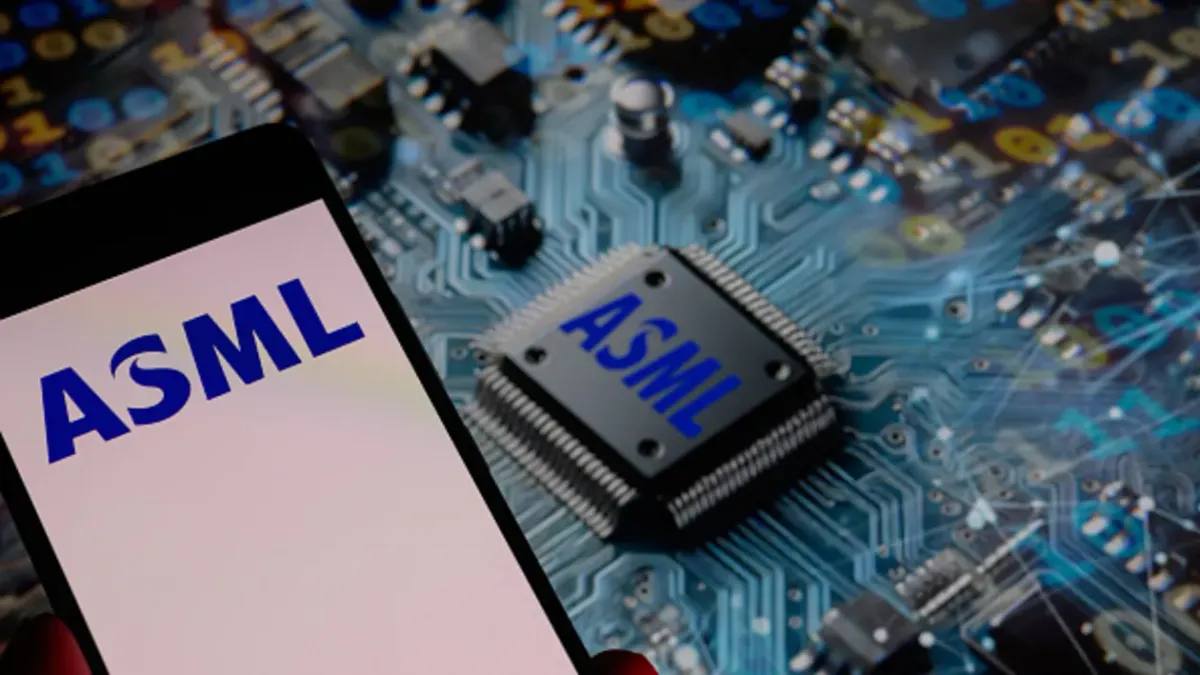Shares of ASML Fall 6.5% Following Caution That It Can't Assure Expansion in 2026

ASML, a key figure in the international semiconductor supply chain, watched its stocks plummet by a steep 6.5% after a conservative forecast on its growth prospects in 2026. Even after announcing robust financial performance in the second quarter of 2025, the Dutch technology giant was in doubt regarding its ability to continue its growth pace next year with a tough macroeconomic and geopolitical landscape.
Strong Second Quarter Performance
In Q2 2025, ASML registered net sales of €7.7 billion (around $8.95 billion), surpassing expectations of €7.52 billion from analysts. The net profit of the company also came in at €2.29 billion, better than the consensus estimate of €2.04 billion. The notable standout was the stunning net bookings of €5.5 billion, far higher than the forecast of €4.19 billion, demonstrating robust demand for ASML's cutting-edge semiconductor equipment.
ASML Chief Financial Officer Roger Dassen credited this good performance to some extent due to revenue earned from upgrading old machines and lesser-than-anticipated effects of U.S. tariffs on its products. The semiconductor sector has been significantly affected by the escalating trade tensions and tariff measures, particularly between the U.S. and China.
2025 Guidance and Uncertainty over 2026
Forward, ASML offered a mixed outlook. It predicted third-quarter revenues between €7.4 billion and €7.9 billion, which missed market expectations of €8.3 billion. For the year 2025, ASML now anticipates net sales to increase by 15%, paring down its earlier revenue forecast range to between €30 billion–€35 billion to approximately €32.5 billion.
But the firm's 2026 growth statement raised alarms. CEO Christophe Fouquet cited the solid foundations of ASML's AI-driven customers but conceded increasing uncertainty due to macroeconomic volatility and tensions between nations. "Even if we continue to prepare for the growth in 2026, we cannot confirm it at this point," Fouquet remarked.
AI as a Key Growth Driver
ASML is the dominant producer of extreme ultraviolet lithography (EUV) equipment, which is used to make the most cutting-edge semiconductor chips in the world. These devices help companies such as Apple, Nvidia, Intel, and Taiwan Semiconductor Manufacturing Co. (TSMC) make next-generation chips that drive everything from smartphones to AI systems.
Demand for AI has been a major driver of growth for ASML, particularly as more businesses use advanced computing technology. ASML has started shipping its next-generation High Numerical Aperture (High NA) EUV tools, which are larger and more powerful than the earlier versions and individually cost over \$400 million. These tools are the future of chip production and ASML's growth plan, and one High NA tool was shipped in the second quarter.
Geopolitical and Economic Factors' Impact
ASML's conservative approach mirrors wider challenges for the semiconductor sector in the form of supply chain dislocation, trade barriers, and economic uncertainty worldwide. U.S. export controls on semiconductor technology have made life more difficult for companies such as ASML that depend on a worldwide customer and supplier network.
Even with these headwinds, ASML is still a corner pillar in the ecosystem of chipmaking, and the company's performance is keenly monitored as a bellwether of semiconductor markets' health.
Frequently Asked Questions (FAQs)
Why did ASML's shares decline following its Q2 2025 results?
ASML's shares decreased by 6.5% primarily due to the company's warning that it could not assure growth for 2026, citing uncertainty owing to economic and geopolitical issues even though it beat estimates of second-quarter earnings.
What is an EUV machine, and why does it matter?
Extreme Ultraviolet Lithography (EUV) machines are essential tools utilized to produce the latest semiconductor chips. They allow chipmakers to produce smaller, faster, and more efficient processors vital for today's electronics and artificial intelligence applications.
Why is artificial intelligence fueling demand for ASML's products?
Artificial intelligence technologies need sophisticated, high-performance chips, which create more demand for EUV lithography machines producing such chips. ASML's High NA tools are poised to capitalize on this growing demand, fueling AI development in many industries.
What are the key risks to ASML's expansion?
The primary risks are macroeconomic instability, global political tensions (most notably U.S.-China trade policy), and possible supply chain disruption. Such threats pose uncertainty in demand and investment cycles for semiconductor manufacturing equipment.
In what way does ASML's performance affect the semiconductor industry?
As a dominant seller of next-generation chipmaking equipment, ASML's well-being is representative of wider trends in the semiconductor industry. Its capacity to innovate and keep up with demand is vital for the fabrication of next-generation chips driving technology across the globe.
ASML's conservative stance draws attention to the delicate balance between robust technology demand, particularly from AI, and the uncertainties raised by a multipolar geopolitical climate. Industry observers and investors will closely watch how ASML will cope with these challenges in the future years.



